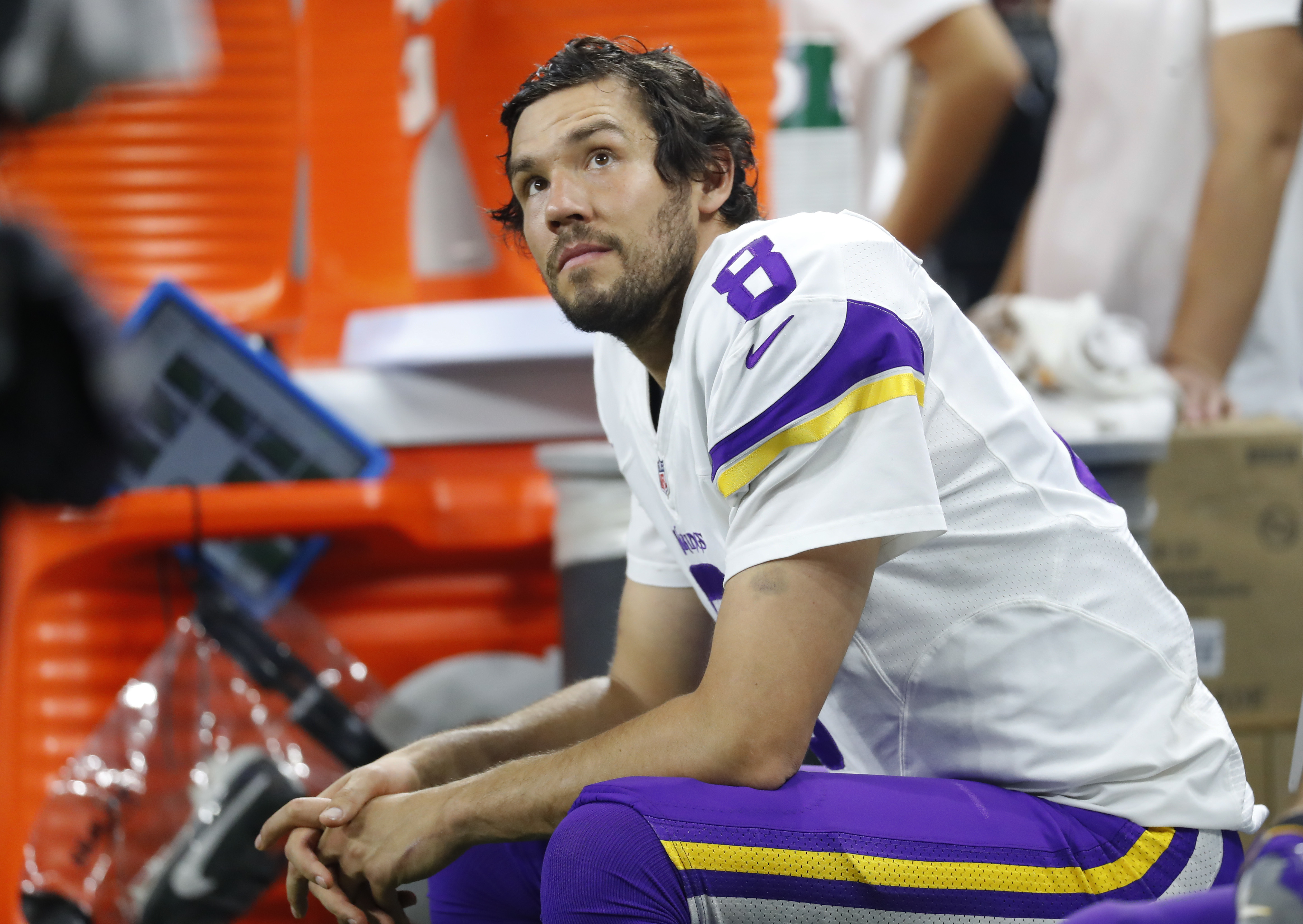
Minnesota Vikings fans awoke today with a fresh reminder that nobody wins the Super Bowl in week five.
The euphoria surrounding the team’s start has given way to the very real possibility that the team, which lost in Detroit yesterday during a pause in Aretha Franklin’s rendition of the National Anthem, will struggle to make the playoffs now.
It’s a reality that we should’ve seen coming. Teams don’t lose their starting quarterbacks and their entire running game and do well.
In his column today, ESPN’s Bill Barnwell is second-guessing the Vikings’ decision to give up first- and fourth-round draft choices to get quarterback Sam Bradford from the Philadelphia Eagles. Bradford played well enough early on to make some people start wondering whether Teddy Bridgewater has a future with the franchise if/when he recovers from a devastating injury.
The original argument back when the Vikings traded two draft picks for Bradford was they had a Super Bowl-caliber team built around a 31-year-old running back. Trading for Bradford kept their window open; failing to acquire him would have shut the door on any championship aspirations the Vikings had for 2016. The hole in that argument is what we’ve seen happen this season. It assumes that everything else for the Vikings is going to go right; namely, that the team would avoid the sort of injuries that could sink even the sturdiest NFL battleship.
That belief was likely misguided. Nobody could have predicted Peterson would miss almost the entire season, but he was a 31-year-old back with nearly 2,400 carries on his tires with a history of injury issues. Even ignoring the child abuse case that cost him his 2014 season, Peterson has made it through only two 16-game seasons in the past five years. He was always likely to miss a few games, which erodes the logic of the trade a bit. The offensive line rotation included five veterans who have required a trip to injured reserve over the past two seasons, and that doesn’t include Kalil (whose play has deteriorated while limping through injuries) and fill-in Jake Long (whose career was decimated by injuries and who suffered an Achilles injury after four games).
Bradford isn’t the cause of the team’s problems, he notes. The Vikings thought they had a Super Bowl team when they gave up the draft picks for a quarterback. They don’t, Barnwell says. They now have about a 5 percent chance of getting to the Super Bowl, he figures.
Star Tribune writer Matt Vensel says it’s too bad Bradford made his biggest mistake — an interception setting up the winning Detroit field goal — at the season’s biggest moment. But the loss, he says, falls to the defense, the team’s perceived strength.
This young, talented, athletic group was bad against the Bears. It allowed the Lions to pull off an even more improbable comeback three weeks ago. It couldn’t get off the field against the Redskins. And if not for that pick-six by Xavier Rhodes last weekend, it may have gotten ugly against the Cardinals.
Greenway said it best when asked about the offense after the game: “The defense has enough things we need to do better to be pointing fingers.”
All in all, Bradford has turned out to be the quarterback the Vikings thought they were getting when they swung the trade, and he hasn’t made a difference. That, Barnwell concludes, makes it a bad deal.
